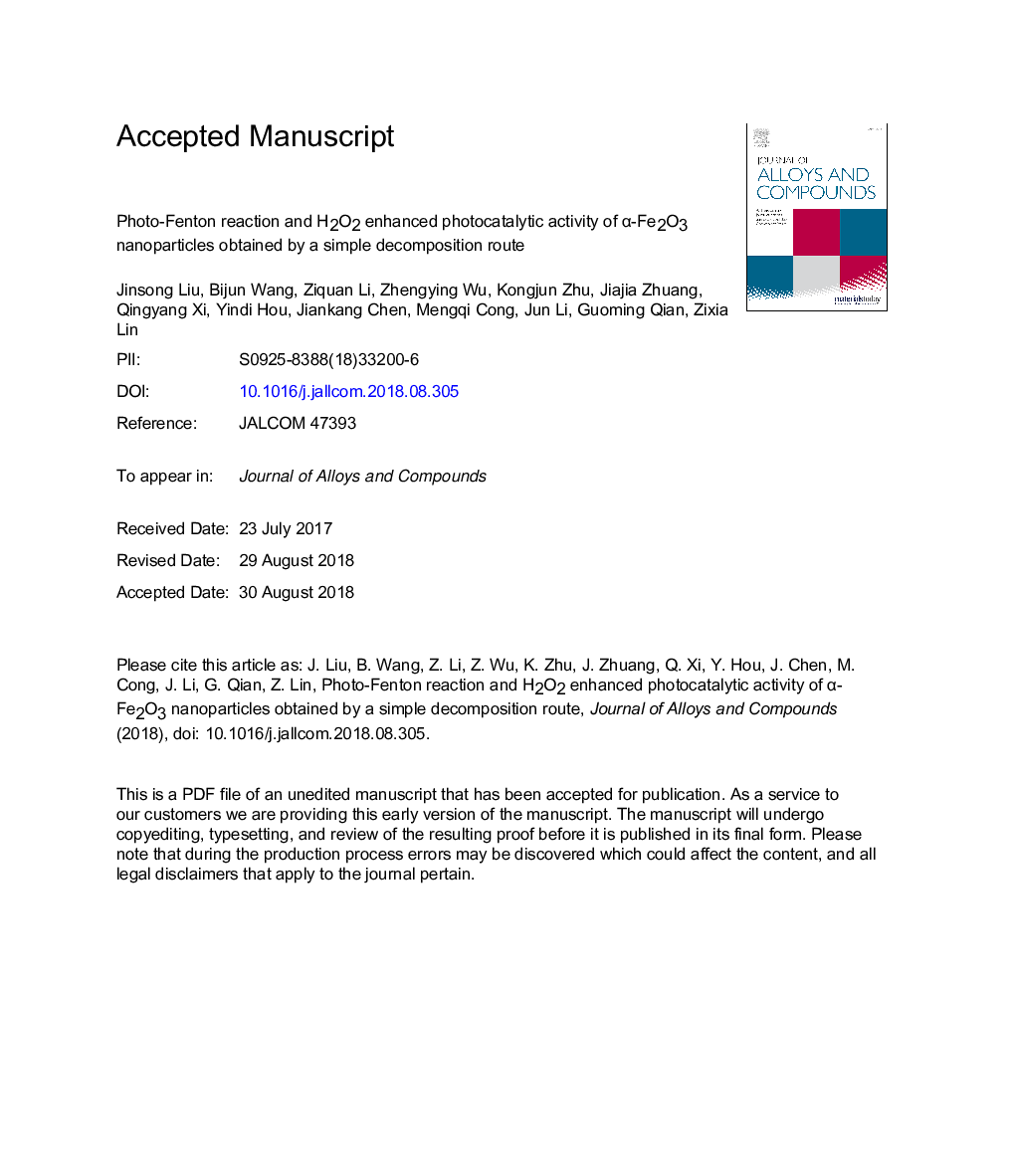| Article ID | Journal | Published Year | Pages | File Type |
|---|---|---|---|---|
| 10142161 | Journal of Alloys and Compounds | 2019 | 24 Pages |
Abstract
α-Fe2O3 nanoparticles with different sizes were successfully synthesized by a simple SDS-assisted grinding reaction and subsequent heating treatment process. Effects of calcination temperatures on crystal structure, optical and photocatalytic properties of the products were investigated by TG-DSC, FTIR, XRD, TEM, HRTEM, and UV-Vis techniques. Results showed that growth of the α-Fe2O3 nanoparticles was very slow, and the average crystallite size gradually increased with increasing calcination temperatures. Optical measure and calculation showed that there is an increasing trend for the band gap with increase of calcination temperature. The α-Fe2O3 nanoparticles obtained at 500â¯Â°C revealed higher photocatalytic degradation efficiency for MB than the other samples, attributing to the optimal value between transiting electrons and recombination of electron-hole pairs. Radical scavengers experiments implied that ·OH and eâ played important roles in the photocatalytic process. The photodegradation time was greatly shortened, and the photocatalytic efficiency was further enhanced and raised to over 90% after adding H2O2, which is due to generation of a large number of the highly oxidative ·OH by photo-Fenton reaction.
Related Topics
Physical Sciences and Engineering
Materials Science
Metals and Alloys
Authors
Jinsong Liu, Bijun Wang, Ziquan Li, Zhengying Wu, Kongjun Zhu, Jiajia Zhuang, Qingyang Xi, Yindi Hou, Jiankang Chen, Mengqi Cong, Jun Li, Guoming Qian, Zixia Lin,
